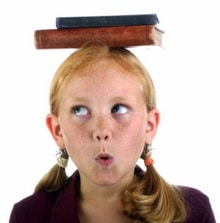 I am a big proponent of using things around the house in order to teach my son his homeschooling objectives. Even when I was teaching in the public schools, I loved to adapt my curriculum to teach with a hands-on approach, rather than a worksheet approach. I took the objectives given to me and then looked around my classroom to teach them. Sometimes it was a simple game or sometimes I used visuals to explain the point.
I am a big proponent of using things around the house in order to teach my son his homeschooling objectives. Even when I was teaching in the public schools, I loved to adapt my curriculum to teach with a hands-on approach, rather than a worksheet approach. I took the objectives given to me and then looked around my classroom to teach them. Sometimes it was a simple game or sometimes I used visuals to explain the point.
I do the same thing while homeschooling my children. I try to think outside of the box in order to use objects they can touch and move in order to help them understand a concept. For example, in order to help my son with his addition facts, I made up a game called “Star Wars War With A Twist”. He loves Star Wars and we had just gotten him some playing cards that had Star Wars characters on them. We also love to play the card game, War (great for greater than/less than practice). Instead of each person putting one card down and seeing who had the largest number, we each put two cards down and had to add them together. This helped him practice his addition skills, as well as his greater than/less than skills.
For Reading, we read books we have as well as library books, instead of reading stories out of a reader. For writing practice, he writes in a journal (homemade) each day. We use a real clock to learn time (especially because the minute hand turns correctly with the hour hand), real money to practice money counting, foam letters and clothespins with letters written on them to practice spelling words, large homemade dice (made out of cube shaped boxes) to practice addition/subtractions, and we use a lot of construction paper to create different things. These are just a few of the things that we use that are simple (and inexpensive) to help our children learn.
One of my older son’s objectives was to learn about pictographs and bar graphs. Since I wanted him to graph real information, we got out all of his leveled books. He sorted his books into their levels and then we made a pictograph on the floor. We discussed all of the parts of the graph: labels, x and y axis, as well as what the books stood for in the graph. Then we took that information and made a bar graph on the white board. He was able to see the same information on two different graphs that way.
What He Learned:
Graph – a way to show information in a “picture” form
Graph Parts:
- “Y” and “X” axis
- Each axis needs a label
- The entire graph needs a label
Graphing Steps:
- Organize your information (data) – we separated his leveled books into piles
- Lay out your data – he laid the books in rows making sure to line them up neatly
- Examine your data – we talked about which one had the most, least and added some of them together
Types of Graphs:
- Pictograph – a graph using pictures
- Bar Graph – a graph using bars
